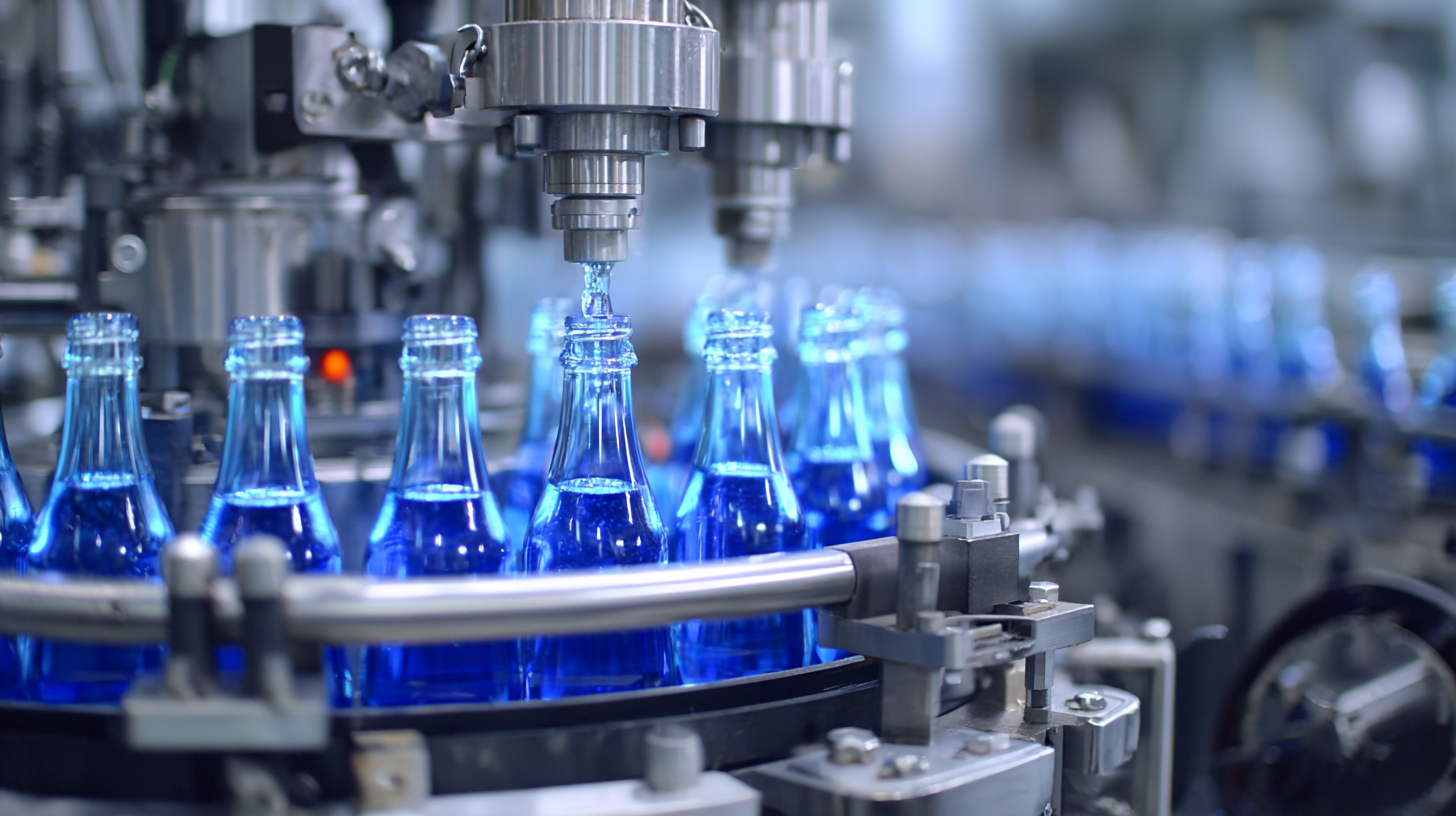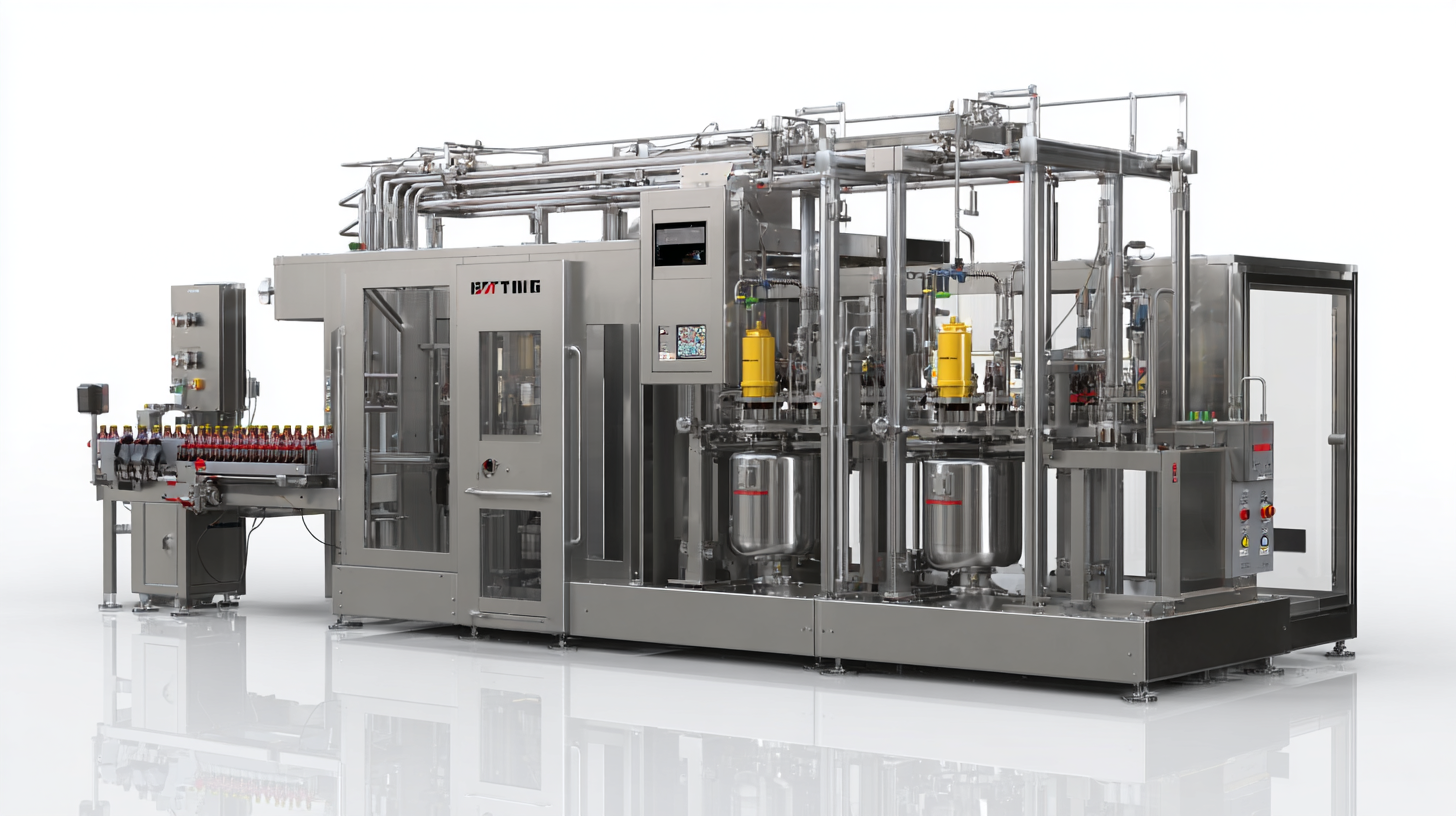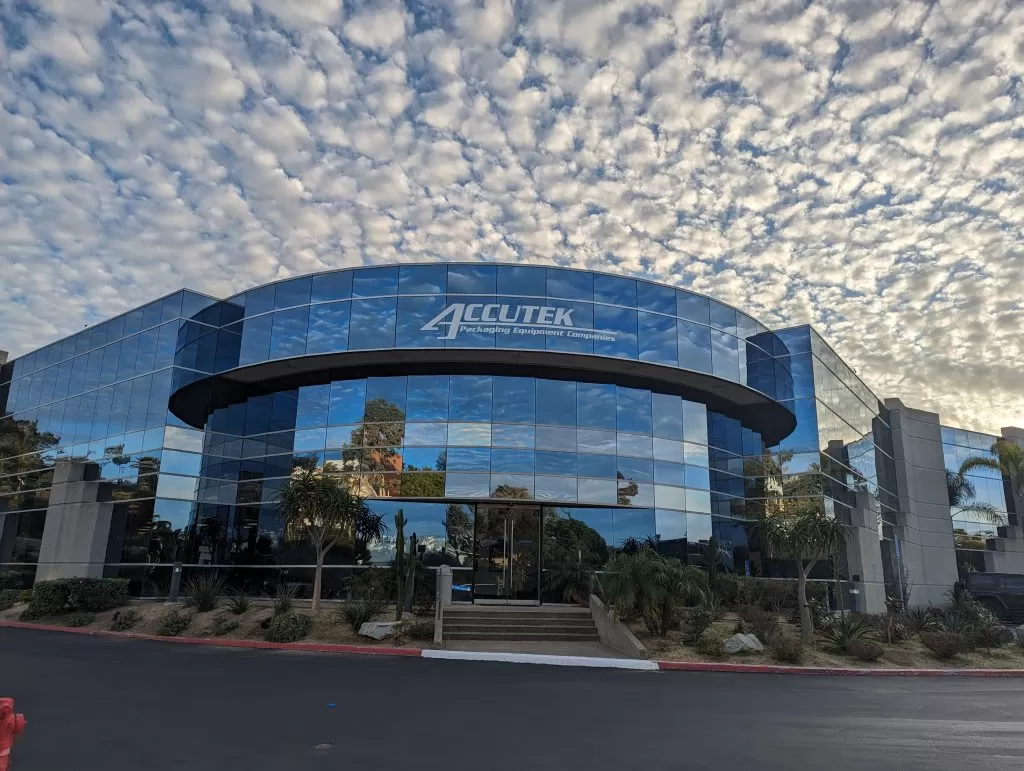In the ever-evolving landscape of manufacturing, the bottle filling machine stands out as a quintessential component that significantly enhances production efficiency and quality. As we venture into 2023, the need for precision, speed, and reliability in bottling processes has become more critical than ever. Leading manufacturers are innovating to deliver machines that not only meet the rigorous demands of the industry but also embody the spirit of excellence with a blend of world-class manufacturing and proud Chinese craftsmanship. This blog explores the seven key features that distinguish the best bottle filling machines in today’s market, showcasing how these advancements position industry leaders for global success and set new standards for efficiency and effectiveness in bottle filling operations. Join us as we delve into the attributes that are defining the future of bottling technology.

The bottle filling machine industry is continuously evolving, driven by innovative design features that enhance efficiency, accuracy, and user experience in 2023. One key innovation is the incorporation of advanced sensors and automation technologies, allowing for real-time monitoring of fill levels and product integrity. This not only reduces waste but also ensures compliance with stringent industry standards. Additionally, machines now come equipped with customizable fill speeds, catering to various production needs while minimizing downtime between batches.
Another significant design advancement is the focus on user-friendly interfaces. Modern machines often feature touchscreens with intuitive controls that simplify operation and maintenance. This helps reduce training time for operators and enhances overall productivity. Moreover, smart technology integration enables remote monitoring and troubleshooting, enabling operators to address issues swiftly without the need for on-site intervention.
Tips for choosing the right bottle filling machine include considering the specific beverage type you plan to fill. Different products may require varying filling technologies, such as gravity filling for thick liquids or vacuum filling for volatile substances. Additionally, always assess the machine's scalability to ensure it meets future production demands. Lastly, prioritize machines with robust hygienic designs, as cleanliness is paramount in maintaining product quality and safety.

In 2023, the integration of automation and artificial intelligence (AI) is reshaping the landscape of bottle filling machines, positioning them as industry leaders. Modern filling machines are increasingly equipped with AI-driven capabilities that enhance production efficiency and accuracy. By utilizing predictive demand forecasting, these machines can adjust their operations in real-time, minimizing waste and optimizing resource allocation. This advancement not only meets the rising demands for productivity but also aligns with sustainability efforts by reducing material waste in the packaging process.
Moreover, the incorporation of smart automation technologies allows for seamless integration within manufacturing workflows. For instance, robotic systems can efficiently handle the picking and packing processes, ensuring consistent output and higher precision in filling operations. This level of automation not only accelerates production rates but also significantly lowers the need for manual labor, contributing to a safer and more efficient workplace. As industries continue to adopt these innovative technologies, the role of AI in enhancing filling machine efficiency will undoubtedly lead to more sophisticated and responsive packaging solutions.
In 2023, the bottle filling machine industry is witnessing a significant shift towards eco-friendly designs that not only enhance operational efficiency but also promote sustainability. As industries strive to reduce their carbon footprints, innovations in bottle filling machines are integrating advanced eco-design principles. For instance, reducing waste through optimized production techniques is expected to lower greenhouse gas emissions, mirroring trends across sectors such as construction and automotive design, where sustainable practices have become paramount.
To remain competitive, manufacturers should focus on key sustainability features when selecting bottle filling machines. Implementing automated systems designed with eco-friendly materials can lead to reduced energy consumption, ultimately driving down operational costs. Tips for achieving this include assessing the machine's energy efficiency ratings and exploring those that utilize recyclable components.
Moreover, businesses can leverage data insights to optimize their operational processes through artificial intelligence, mimicking successful eco-innovation strategies seen in jewelry design and other industries. This adaptability not only meets current market demands but also paves the way for future developments that prioritize sustainability. Investing in technology that aligns with eco-friendly practices will lead to a greener, more responsible production cycle, setting industry standards for years to come.
This chart illustrates the importance ratings (on a scale from 1 to 10) of seven key features that define the best bottle filling machines in 2023. Notably, eco-friendly design and efficiency emerged as the top-rated features, reflecting the industry's shift towards more sustainable practices.
When evaluating bottle filling machines, performance metrics such as speed, accuracy, and reliability are paramount for industry leaders in 2023. Speed is crucial; modern filling machines are engineered to maximize throughput without compromising quality. Advanced technology minimizes downtime and accelerates the filling process, enabling manufacturers to meet increasing demands. High-speed fillers can easily operate at rates exceeding 300 bottles per minute, making them invaluable for high-volume production environments.
Accuracy is another critical metric that cannot be overlooked. Precision filling mechanisms ensure that every bottle receives the exact required amount of liquid, which is essential for compliance with industry standards and customer satisfaction. The best machines utilize sophisticated sensors and automated controls to detect inconsistencies and adjust fill levels on-the-fly. This level of accuracy not only reduces waste but also enhances the overall efficiency of the production line.
Finally, reliability is the cornerstone of a top-performing bottle filling machine. Continuous operation without breakdowns is crucial for maintaining production schedules. Industry-leading machines feature robust construction and components designed to withstand rigorous use. Regular maintenance schedules and advanced diagnostics further enhance longevity, ensuring that production remains uninterrupted. Together, these performance metrics create a powerful foundation for the best bottle filling machines in 2023, propelling companies to leadership positions in a competitive market.
| Feature | Performance Metric | Industry Standard | Top Machine |
|---|---|---|---|
| Filling Speed | Bottles per Minute | 600 BPM | 800 BPM |
| Filling Accuracy | Percentage | ± 1% | ± 0.5% |
| Changeover Time | Minutes | 30 Minutes | 10 Minutes |
| Ease of Use | User Ratings | 4.0/5 | 4.8/5 |
| Maintenance Frequency | Months | 3 Months | 6 Months |
| Energy Efficiency | kWh/Bottle | 0.15 kWh | 0.10 kWh |
| Safety Features | Safety Incidents | 5/year | 1/year |
In recent years, the beverage industry has witnessed a significant evolution in filling technologies, driven by shifting consumer preferences and market demands. Data trends reveal that today’s consumers prioritize sustainability and efficiency more than ever. This shift is prompting manufacturers to adopt eco-friendly materials and energy-efficient processes in their bottle filling machines. Furthermore, consumers are increasingly favoring products that reflect their values, leading to a rise in demand for bottles made from recycled and biodegradable materials, which impacts filling technologies significantly.

Additionally, the market is seeing a surge in demand for automation and smart technology integrated into bottle filling machines. The ability to collect and analyze data in real-time appeals to manufacturers looking to streamline operations and enhance productivity. As a result, innovations such as AI-driven machine learning and IoT connectivity are becoming essential features. These advancements not only improve accuracy and reduce waste but also cater to the growing consumer expectation for rapid delivery of high-quality products. Adapting to these trends is crucial for industry leaders aiming to stay competitive in the ever-evolving landscape of filling technologies.
Accutek Packaging Equipment Companies, Inc. stands as one of the premier privately owned packaging machinery manufacturers in the United States.

Sign up for all the news about our latest arrivals